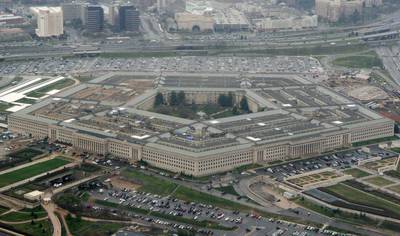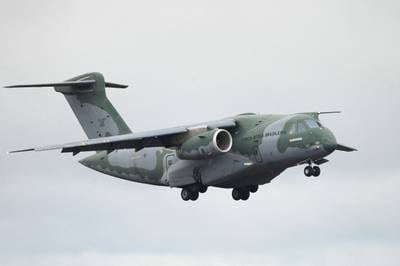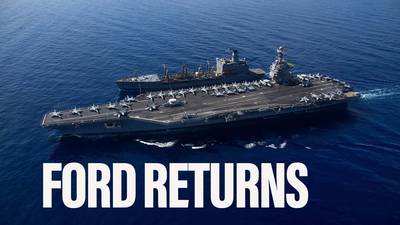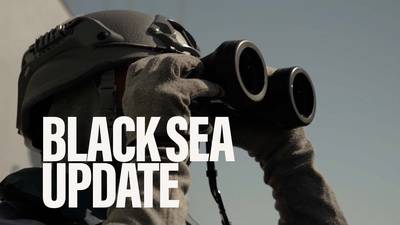STUTTGART, Germany — The past four years have proved fruitful for Lockheed Martin in Europe, as six nations have hitched their wagons to the American company’s fifth-generation F-35 fighter jet.
Despite calls from French leaders for its neighbors to “buy European,” the F-35 has consistently beat out homegrown candidates in the most recent fighter jet competitions, including the Dassault Rafale, Saab’s JAS 39 Gripen, and the Eurofighter Typhoon developed by Airbus, BAE Systems and Leonardo.
This wave of success comes down to the F-35 Joint Strike Fighter’s high rate of interoperability with allies and partners, particularly in NATO, along with its guaranteed upgrade road map, analysts told Defense News. But more than anything, they noted, the jet arrived in Europe with pristine timing, as multiple nations were itching to refresh their fleets by the end of the decade.
Belgium in 2018 became the first Foreign Military Sales customer of the F-35 from Europe, committing to buying 34 F-35A aircraft. Two years later, Poland followed, and now plans to procure 32 F-35As.
In 2021, Switzerland and Finland each picked the platform to replace their respective F-18 Hornets, with the former committing to 36 aircraft and the latter to 64. Most recently, Germany is set to procure 35 F-35A aircraft to replace its nuclear weapons-carrying P-200 Tornado jets, and the Czech Republic has pledged to buy 24 F-35As as it retires its Gripens.

Formal procurement processes for Switzerland, Finland, Germany and the Czech Republic have not yet begun, a Lockheed Martin official said in an email to Defense News. Eventually, the company expects more than 550 F-35s will be stationed in Europe by 2030, to include U.S. Air Force squadrons based at Royal Air Force Lakenheath in England.
Other European program participants include Denmark, Italy, the Netherlands, Norway and the United Kingdom.
Contracts and pushback
Part of the F-35′s success in Europe comes down to great timing, as many European air forces prepare to recapitalize their fourth-generation fleets, said Douglas Barrie, a senior fellow for military aerospace at the International Institute for Strategic Studies.
“Partly by design and partly by good fortune, the F-35 turned up at the right time,” he told Defense News.
European airframe manufacturers traditionally had more success off the continent, noted Richard Aboulafia, managing director of the consulting firm AeroDynamic Advisory. “They know their turf, and their turf for the most part isn’t Europe,” he said.
French company Dassault, in particular, has recently scored notable victories outside of the continent, winning contracts to sell the Rafale to the United Arab Emirates, Egypt and Indonesia, among others. On the European side, France in 2021 signed a contract to provide Croatia with 12 secondhand Rafale jets.
But the main selling point for purchasing a European airframe for non-continental allies and partners — the promise of a long strategic relationship — “just doesn’t apply to NATO Europe,” Aboulafia said of the European alliance members.
Key benefits include the F-35′s interoperability. The aircraft is used in NATO missions such as Baltic Air Policing, and the U.S. earlier this year deployed several aircraft to the alliance’s eastern borders to support intelligence, surveillance and reconnaissance missions following Russia’s February invasion of Ukraine.
As more nations pick the F-35, those countries’ armed services become evermore interoperable across ground crews, training and logistics efforts, said Dan Darling, a senior analyst at Forecast International.
What’s more, the F-35 comes with a robust upgrade road map, with “a steady stream of product improvements” that ensures the aircraft will remain relevant for decades to come, Aboulafia noted.
The reemergence of Russia as an adversary in Europe following its invasion of Ukraine has also prompted allies to prioritize stealth technologies, particularly for Germany and Finland, he noted.
The recent selections haven’t all been without roadblocks. A Swiss coalition of socialists and Green Party members launched an effort, dubbed “Stop F-35,″ to swing a referendum on the procurement decision before the offer period expires in March.

This approach was successful in 2014, when the Swiss voted 52% to 48% to block the presumed sale of Saab Gripen aircraft meant to replace Switzerland’s Northrop F-5 aircraft. But it may not work this time.
Despite “Stop F-35″ retrieving 100,000 signatures to launch the referendum campaign, the Swiss government announced Aug. 24 that it was “not possible” to schedule the vote before the offer period ends, citing the risks of renegotiations with Lockheed and losing its delivery slot to other nations in line. The government urged the procurement to move forward.
The “Stop F-35″ coalition retorted in its own Aug. 24 statement that the government gave an “empty promise” to wait for a referendum before the contract was signed and called the decision “a cowardly dodge.” A spokesperson for the coalition told Defense News in an email that the group is debating its next moves, but will “not be giving up.”
On Germany’s side, the decision to procure F-35s went against years of plans to buy Boeing-made F-18s, and it caused further tension between Berlin and Paris, as the two nations have also hit workshare snags in the Franco-German-Spanish effort to build a next-generation fighter.
European ambitions
The F-35′s success in Europe could exert pressure on tandem efforts to develop a sixth-generation fighter jet and associated weapon systems, analysts noted. The United Kingdom and Italy have teamed up to develop cutting-edge technologies to feed into the Future Combat Air System program, also known by its abbreviation FCAS and its nickname Tempest, with Sweden as something of an observer.
Meanwhile, France, Germany and Spain committed to their own FCAS effort, also known by its French abbreviation SCAF, for système de combat aérien du futur.
The American-made aircraft’s wins overseas have “focused European minds on what they need to do next time around,” said Barrie. French government and industrial leaders in particular have been vocal about the need to “buy European,” openly critiquing neighbors’ decision to buy the Joint Strike Fighter.
Last spring, Dassault CEO Eric Trappier hinted that Germany was under pressure to buy F-35s, even as the country paid lip service to the “buy European” mantra. France’s Dassault and Germany’s Airbus Defence and Space have remained deadlocked for months over the workshare division on SCAF’s keystone project, the next-generation fighter.

During a March earnings briefing, Trappier placed the responsibility on Berlin. “We will see with our No. 1 partner, which is Germany, whether the first decision they make [after investing €100 billion (U.S. $99.8 billion) in new defense capabilities] is to sign the FCAS contract, or to buy the F-35,” he said at the time.
Darling said he doesn’t expect Germany’s relatively small F-35 procurement to ground the entire SCAF program, “but it does throw a bit of another wrinkle into the equation.”
Trappier and French President Emmanuel Macron are justified in their urging of Europeans to buy from within their borders so that their industries can remain competitive, said Barrie. “The F-35 was always seen by Macron as a problem for Europe … because it is fundamentally a U.S. product at the end of the day,” he explained.
However, some analysts noted that France tends to play poorly with its neighbors on defense programs — for example, when it withdrew from the Eurofighter program in the 1980s in favor of developing its own aircraft, which became the Rafale.
Comparing the program structure of a French combat aircraft to the Gripen or Eurofighter, Aboulafia said: “I don’t think there’s a single gasket that crosses [France’s] border.”
Next steps
After this spate of selections, Europe’s big defense spenders are largely spoken for. Fleet recapitalizations tend to come in waves, Barrie noted, adding that “sales won’t completely dry out, but they probably won’t be at the same rate as they’ve been recently.”
Fleet recapitalization efforts within Spain’s Air Force and Navy could be up for grabs. The Air Force is conducting separate efforts to replace up to 70 EF-18A Hornets, and in June the service signed a contract to replace its 20 oldest platforms based in the Canary Islands with 16 Eurofighter Typhoon Tranche 4 aircraft.
But the wider Hornet fleet has no replacement. Spanish Air Force officials told Defense News in November that the choice lay between the Typhoon and the F-35. Those officials acknowledged that if their naval counterparts decide to procure the F-35B to replace the aging Harrier fleet, that opens up an opportunity to buy F-35As.
But in an Aug. 26 email to Defense News, the Spanish Defence Ministry said an F-35 acquisition is not planned “at this time,” emphasizing that Madrid is firmly committed to the trinational FCAS program.
Portugal, as an F-16 operator, could eventually opt for F-35s. But the government has not expressed much urgency to recapitalize its fleet, and could certainly choose a European platform, noted Darling.
“I wouldn’t preclude a Rafale or a Eurofighter sale here or there, but there are just very few markets left to pick up,” he said.
The United Kingdom’s final fleet numbers also remain a wild card. While the program of record, per Lockheed Martin, is for 138 F-35Bs, London has purchased 48 aircraft to date and committed to 26 more this past spring, opening up doubts as to whether it will achieve its original goal.
The Czech announcement shows there may be more Eastern European fleets to gun for, said Aboulafia. Romania has expressed interest in producing F-35s after 2030, according to a Euractiv report.
Meanwhile, Greece in June filed an official letter of request to procure 20 F-35As by 2028, and conversations are ongoing between country officials and Lockheed Martin, a company spokesperson said. However, Athens also ordered 24 Rafales from the French, acquiring 18 aircraft in early 2021 and committing to six more in March 2022.
For its part, Greece has struggled to replace its aging fighter fleet for fiscal reasons, but eventually the nation will gain the more financial ability to place bigger orders, Aboulafia noted.
Still, he added, the question remains: “Will they be for Rafales, or will they be for the F-35?”
Vivienne Machi is a reporter based in Stuttgart, Germany, contributing to Defense News' European coverage. She previously reported for National Defense Magazine, Defense Daily, Via Satellite, Foreign Policy and the Dayton Daily News. She was named the Defence Media Awards' best young defense journalist in 2020.








